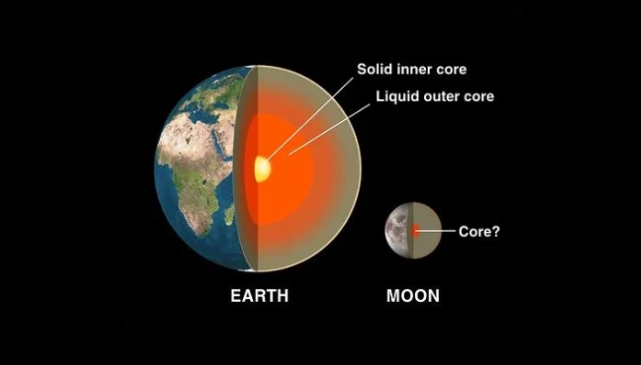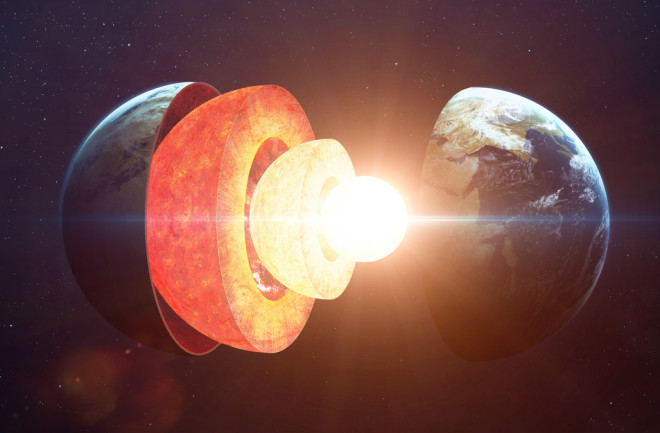
Share This Story, Choose Your Platform!
Rotation of the Earth’s Core has Reversed Its Spin
Scientists have long been mystified by the location of the Earth’s core. Our planet’s core is a ball of seething, hot metal, mostly iron and nickel, that lies just over 1,800 miles below the surface. It has a lot of distinctive traits, including its own spin. The spin rate of the Earth’s inner core has slowed, according to recent study from Peking University, in China.
Here are a few things one should know about their study and what the overt implications of the findings are.
Alter in Earth’s Rotation
The study’s findings, which were reported in Nature Geoscience, suggest that Earth’s core may be rotating in the other direction. Its rotation has slowed considerably, and it started to do so back in 2009.
Researchers Yi Yang and Xiaodong Song state in their work that they have demonstrated striking observations that imply the inner core has practically ended its rotation in the recent decade. They also mentioned that their observations show a modest degree of rotational reversal in addition to a delay.
The Earth’s core was formerly believed to have been spinning more quickly than the surface of the planet. These variations in spin are most likely caused by the magnetic field produced by Earth’s outer core and the gravitational pull of the mantle on the inner core.

A Larger Force at Work
It is challenging to ascertain how Earth’s core has functioned in the past because scientists are continuously discovering more about it. The findings of the study, however, suggested that a bigger, longer-term pattern might be behind all these changes taking place. Yang and Song found that the rotation of Earth’s inner core remained constant from the late 1970s to the early 2000s, by looking at data going back to the 1960s.
Prior to that, however, they discovered that a further slowing or reversing event may have taken place in the early 1970s in Earth’s inner core. In their investigation, the researchers concluded that the rotation is not totally stable, with a substantial spin rate in the earlier decades but a considerably lesser rate in the most recent decade and in the 1960s to 1970s.
Is the World Nearing Its End?
While these outcomes could initially seem to have a significant impact on life, we haven’t yet noticed anything. Hrvoje Tkalcic, a geophysicist at Australian National University, told CNN in an interview that “nothing cataclysmic is happening.”
Essentially, it means that compared to a decade ago, when it was spinning a little bit faster, the inner core is now more in time with the rest of the world. According to the study, minute variations in the strength of Earth’s electromagnetic field and the gravitational pull of the mantle on the inner core would be sufficient to vary the rotational speed of the inner core.
But once more, these modifications have little to no effect on life on Earth’s surface.
However, Song and Yang both have come to the conclusion that more study is required on the matter before coming to a definite conclusion. And given how enigmatic our planet’s core is, there probably is still a lot more to learn.

So, what does it suggest?
The inner core of our planet may have stopped rotating over the past ten years, and its rotation may be about to reverse, according to seismic waves that traverse through the Earth.
A solid mass of nickel and iron at the center of our planet has been compressed by gravity into a sphere that is about 2,400 kilometers in diameter. The Earth’s protective geomagnetic field is produced by a layer of liquid iron and nickel around the solid core, which is followed by the layers of the mantle and then the crust.

You May Also Read
Chinese Real Estate Firm Erected a Sturdy Earthquake Resistant, 10-Storey Building in ONE Day
While the scenario might resemble one from a science fiction disaster film, the alteration in the rotation of the Earth’s inner core is relatively unimportant. As long as we are orbiting the sun, the core will continue to spin.
Additionally, any mention of the core rotating backwards only applies when seeing all of this from a single position on Earth’s surface. The most terrible thing that can happen is that our day’s duration slightly lengthens. These are modifications that we wouldn’t notice, so to speak.
However, they are significant to the researchers and will aid in their efforts to learn more about the behavior of our planet.



